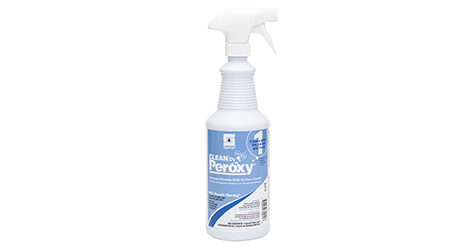Although the U.S. Environmental Protection Agency (EPA) confirms we now spend 90% of our lives indoors, that doesn’t mean we are protected from pollutants. Outdoor pollution, such as smoke and particles, can enter facilities through open windows and ventilation systems. Other pollutants originate indoors, including allergens such as mold, dust mites, and pet dander.
Carpet can increase our exposure to air pollutants by acting as a reservoir of allergens. Simply walking over or vacuuming carpet can suspend allergens into the air, where they are inhaled. Allergens that remain on the carpet are often pushed to the bottom of the carpet pile by foot traffic, where they stick to the fibers and are difficult to remove.
Reducing indoor pollutant levels is essential for creating a healthier indoor environment. Pollution-reducing strategies include a combination of ventilation, pollution source control, and pollutant removal. Regularly cleaning carpet will reduce the level of allergens and other pollutants in the indoor environment.
What is an allergen?
An allergen is a usually harmless substance that is capable of triggering an immune response in sensitive individuals. For example, if you have an allergy to animal dander, your immune system identifies the animal dander as an invader and responds by releasing chemicals that can cause symptoms in the nose, throat, eyes, ears, and skin. Allergy symptoms can range from sneezing, watery eyes, and itchy skin to more serious symptoms, such as difficulty in breathing and swelling in the throat that can occur in a life-threatening reaction called anaphylaxis.
Why is it important to avoid allergy triggers?
Asthma and allergies have been increasing since the early 1980s. More than 25 million Americans experience asthma and over 50 million suffer from allergies every year; health experts predict these figures will rise. Avoiding triggers is not only essential in the management of asthma and allergies, it will also create a healthier indoor environment that benefits everyone. Avoiding triggers may also help to prevent sensitization and minimize the development and severity of respiratory disease.
Consider common indoor allergy triggers
The most common indoor allergy triggers are mold spores, dust mites, and pet dander. Mold grows in damp or moist environments, including on carpet and other building materials. Mold releases spores that are invisible to the naked eye and can float through the air. Disturbing a mold source can send spores into the air, triggering allergies and other respiratory issues.
Dust mites are very small creatures that can live in carpet and other textile furnishings indoors, where they feed mainly on human skin flakes. Accumulation of food and moisture in carpet can provide an ideal habitat for dust mites. People can be allergic to dust mites and to their droppings, which become airborne when disturbed.
Cat and dog allergens are also prevalent in indoor environments. These particles stick to people’s clothing and are carried from homes into other buildings, exposing non-pet owners to allergens. Cat allergens are very small and can remain airborne for hours at a time without any disturbance. Pet allergens can build up in carpet in the absence of an effective cleaning program.
Set up cleaning strategies to reduce indoor allergen levels
Regular carpet cleaning is essential for the removal of dirt and allergens. Vacuum cleaners can vary widely in their ability to remove dust and allergens from carpet, depending on suction power and the cleaning head used.
Frequently dry vacuum your facility’s carpet with a machine proven to effectively remove allergens. Select a machine that has a high-efficiency particulate air (HEPA) filter and a fully sealed system to ensure vacuumed allergens are not unintentionally released. Cleaning workers with severe sensitivity to allergens should wear a mask while vacuuming as the task always increases the level of airborne allergens in a room. Consider investing in robotic vacuums to reduce your staff’s exposure to dust and allergens.
Periodically wet vacuum your facility’s carpet to remove allergens. Use a carpet washer tested to effectively remove allergens from flooring. Steam cleaning also can effectively remove allergens from carpet. Avoid excessive use of water with carpet washers and steam cleaners. Leaving carpet fibers damp can promote mold growth and increase the rate at which dust mite eggs hatch.
Proper equipment maintenance is important to allergen removal as well. Poorly maintained cleaning equipment won’t be able to clean carpet as effectively. Follow the manufacturer’s recommendations for equipment care and replacement parts.
If using a detergent for cleaning carpet, consider its cleaning efficacy and any potential impacts on indoor air quality. Certain cleaning products contain ingredients that can trigger allergy symptoms. The American Lung Association recommends only using cleaning products that “do not contain or have reduced amounts of volatile organic compounds (VOCs), fragrances, irritants and flammable ingredients.” Always follow manufacturer instructions and ventilate, if possible, when using cleaning products.
Consider other strategies for creating a healthier indoor environment:
- Place mats at facility entrances to reduce the amount of dirt and allergens tracked onto carpet from shoes.
- Use a moist cloth weekly to remove dust and allergens that accumulate on hard surfaces.
- Keep indoor humidity between 30% to 50% to suppress the growth of mold and dust mites.
- If high humidity is a concern, improve air flow and ventilation in your facility and/or use a commercial-grade dehumidifier.
- Consider using a portable HEPA air cleaner or an HVAC system with a HEPA filter to remove particles and allergens from the air.
Identify healthier cleaning products
When looking for products that contribute to a healthier indoor environment consider certified products from trusted parties. Check product packaging and manufacturer websites for evidence of independent testing or third-party certification. Selecting products labeled as independently tested and verified is a good way to avoid false claims on products and to ensure that what you’re buying will contribute positively to the indoor environment. For example, the asthma & allergy friendly® Certification Program tests vacuum cleaners and cleaning products for their allergen removal performance and their impact on indoor air.
References
U.S. EPA. Indoor Air Quality. https://www.epa.gov/report-environment/indoor-air-quality
U.S. Centers for Disease Control and Prevention. 2019 National Health Interview Survey (NHIS) Data. https://www.cdc.gov/asthma/nhis/2019/data.htm
American College of Allergy, Asthma & Immunology. Allergy Facts. https://acaai.org/allergies/allergies-101/facts-stats/
S.R. Haines, R.I. Adams, B.E. Boor, et al. Ten questions concerning the implications of carpet on indoor chemistry and microbiology. Building and Environment. 170 (2020) 106589.
J.A. German, M.B. Harpet. Environmental control of allergic diseases. American Family Physician. 66 (2002) 421-427.
American Lung Association. Cleaning Supplies and Household Chemicals. https://www.lung.org/clean-air/at-home/indoor-air-pollutants/cleaning-supplies-household-chem




